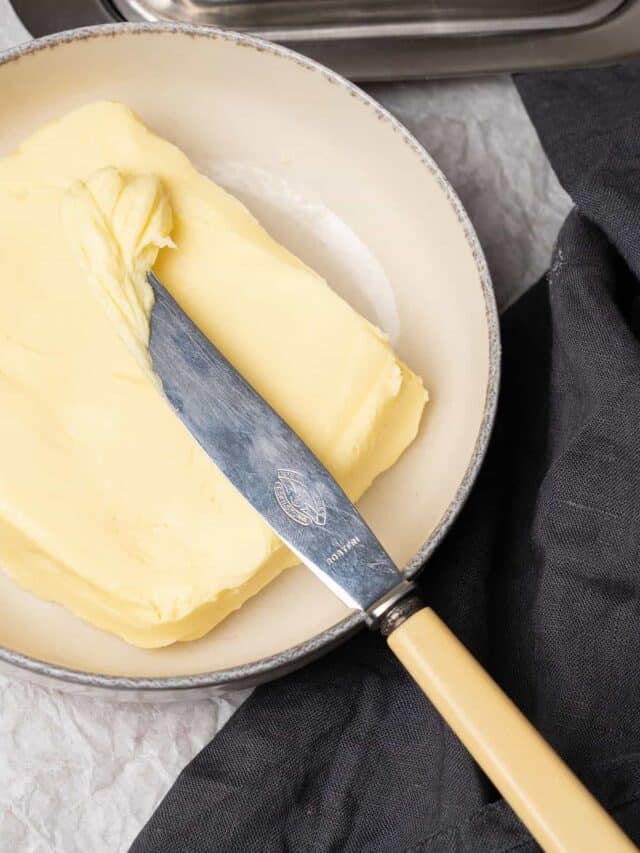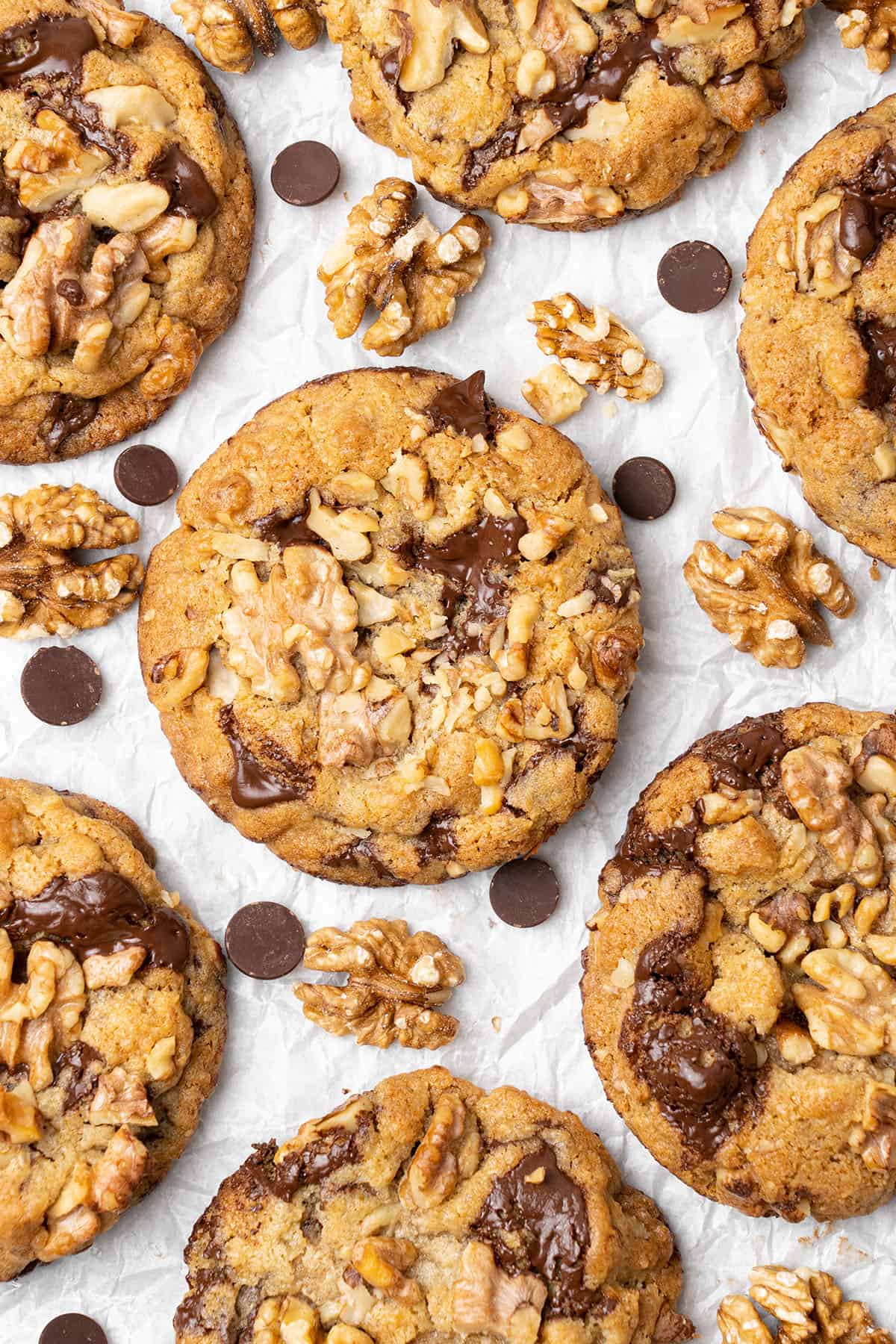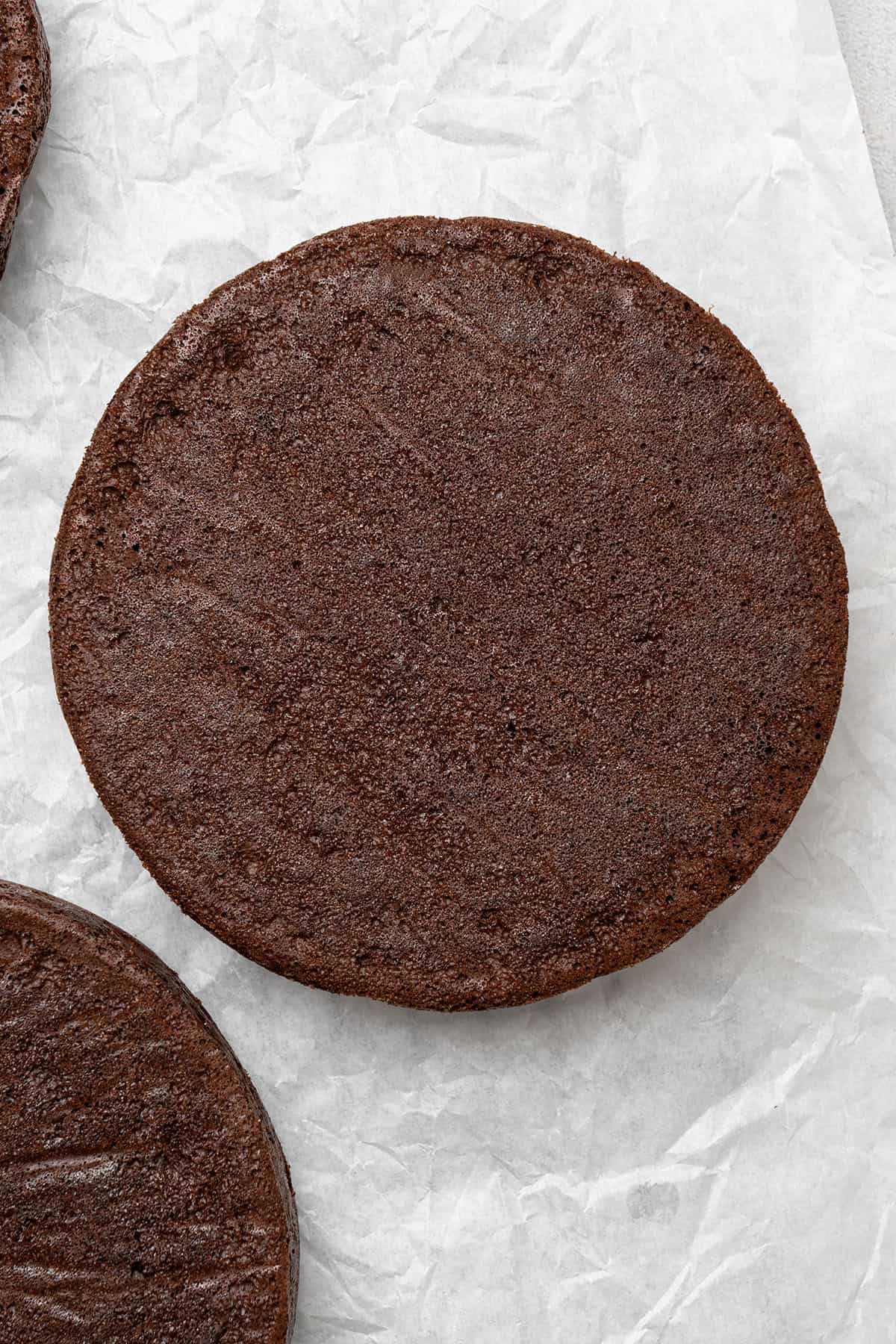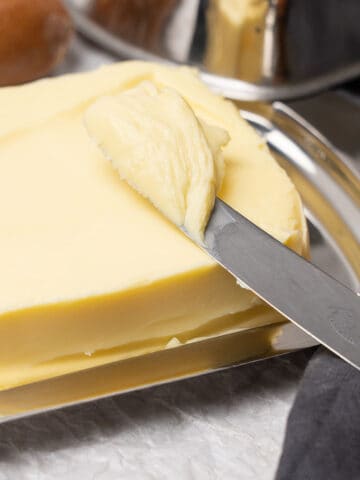If you've ever wondered what is shortening in baking and how it compares to other essential ingredients in your favorite recipes, you've come to the right place. Shortening is known to be a key ingredient in making flaky pie crusts, but that's not all you can use it for! In this guide, I dive into what shortening is, how you use it, and share some shortening in baking examples to help you make the most tender and voluminous desserts!

Jump to:
- What is Shortening in Baking?
- Is Crisco the Same as Shortening?
- What Is Shortening Used For?
- Shortening vs. Butter
- Shortening vs. Lard
- What is a good substitute for shortening?
- Cookies Made with Butter vs. Shortening
- Pie Crust Made with Butter vs. Shortening
- Cake Made with Butter vs. Shortening
- Shortening FAQs
- Related Baking Guides
What is Shortening in Baking?
Shortening, by definition, is a type of fat that is a solid when at room temperature so even butter is a kind of shortening.
What is shortening made of? According to the shortening modern definition, it is typically made of soybean oil, palm oil, or cottonseed oil and is colorless, flavorless, odorless, doesn't require refrigeration and is 100% fat. Shortening is mainly referred to as hydrogenated vegetable fat in baking.
There are four types of shortening, each of which is ideal for different kinds of recipes:
Solid shortening is a solid fat available in a can or "baking sticks," like butter. It is best for baked recipes such as pie crusts, bread, and pastries.
Liquid shortening is sold in boxes and plastic jugs. It is usually made of soybean oil and is ideal for deep-frying food and baking recipes that require melted shortening, such as cake.
All-purpose shortening is primarily used in a professional environment, such as a bakery or restaurant. It is made of palm oil and canola oil for cookies, pie crusts, pastries, bread, and other baked goods.
Cake or icing shortening is also primarily used in a professional environment. Because it contains emulsifiers, it is ideal in moist, high-volume recipes such as cakes, icings, tortillas, and flatbreads.
Is Crisco the Same as Shortening?
Crisco is a hydrogenated, all-vegetable fat introduced in the United States in 1911 by Procter & Gamble. It was the first shortening made entirely of vegetable seed oil versus cottonseed oil and quickly became the primary fat and common ingredient used in baking over lard. Although it is just one of the few shortening examples, because of its popularity in the kitchen, Crisco has become synonymous with the term "shortening".
As a 100% vegetable oil, Crisco has a high melting point making it ideal for baking, especially for flaky pie crusts, soft cookies, and moist cakes.
What Is Shortening Used For?
What does shortening do in baking? Shortening is used in baking as well as cooking recipes to help improve the texture, volume, and stability. It prevents gluten formation, which gives the dough an elastic, gummy effect like raw pizza crust. Its result is a "short" dough (hence the word "shortening") that creates a flaky, crumbly texture. The shortening also remains intact during baking and reverts to its soft, semisolid texture as it cools.
Shortening is a kind of fat that is often used for making flaky pie crusts and other baked goods. It is also ideal for creating soft and fluffy cookies and tender and voluminous cakes. In some recipes, shortening is an ingredient used to grease the pan before baking.
You can also use shortening as a butter substitute when making frosting for a fluffier texture that better withstands heat. It can be a butter alternative for making buttercream, like my creamy german buttercream.
Vegetable shortening is preferred when frying, as it has a high smoke point and can cook at high temperatures without burning and changing the flavor. It is also safer, as it does not splatter or pop as much as regular oil.
Shortening vs. Butter
The main differences between shortening and butter are the fat content, water content, and melting point, all of which significantly affect the taste, texture, and structure. If you are trying to decide which is best to use in your next recipe, you will want to consider the following:
Fat and water content: Shortening contains 100% fat, whereas butter only requires 80% fat (82% for European-style butter). The fat content prevents the baked goods from becoming too dry or tough. Because shortening has 100% fat, it has no water content. Butter can contain up to 16% water resulting in baked goods that are moister and chewier.
Melting point: Shortening also tends to have a higher melting point than butter, allowing it to maintain its solid state for longer during baking. As it slowly melts, it forms a steam that puffs up the layers of the dough to create a thick and crumbly texture.
Volume and stability: Compared to butter, shortening provides more volume and stability than butter. Butter melts and spreads much faster, resulting in a thinner and flatter structure.
Flavor: No doubt, cookies, cakes, and pie crusts taste better when they are made with butter. Shortening, which is made from hydrogenated vegetable oil, has no flavor. For a more flavorful outcome, butter is the way to go, as shortening is flavorless (unless, of course, you wish to avoid the buttery flavor). I prefer 82% European-style butter in my recipes as it provides the best flavor. However, flavored shortenings are available.
Price: Shortening would be the best choice if you are looking for a more economical ingredient, as it tends to have a lower price point.
Make sure to check out how to make butter at home.

Shortening vs. Lard
The main difference between shortening and lard is what it is made from. While shortening is made primarily from hydrogenated vegetable oil, lard is made from animal (typically pork) fat. While you can use the two interchangeably, there will be a slight difference in how your dough looks and tastes.
Unlike flavorless shortening, lard tends to have a pork-like flavor that isn't always ideal for sweet baked goods. However, its large, stable fat crystals and tenderizing properties make it an excellent ingredient for yeasted bread doughs and savory, flaky pie crusts.
When it comes to accessibility, shortening tends to be much more accessible than lard.

What is a good substitute for shortening?
There are a few suitable substitutes that you can use for shortening. However, each has different properties that you will want to take into consideration, as they create different outcomes in your recipe:
Lard: Lard was once considered the "original" shortening. It is one of the best substitutes, especially if a flaky, crumbly texture is what you are after. It is also great for deep frying, as it has a higher smoke point and less water (preventing splattering). However, it is not an acceptable substitute if you are on a plant-based diet or are eliminating pork. When using lard in baking or cooking, you will want to use less than you would have used for shortening.
Butter or Margarine: You can typically use butter or margarine in equal amounts as a substitute for shortening in baking. However, because butter has a lower melting point and contains water, it will result in a denser dough and a less fluffy or flaky outcome. If baking cookies, it will have a crispier, flatter result. Butter is also great for greasing a pan. However, it is not a suitable substitute for deep frying.
Cooking oils: You can easily use vegetable, peanut, and coconut oils as a substitute for shortening in equal amounts. Like shortening, coconut oil is a solid when at room temperature. It is also considered one of the healthier alternatives. The only downside is that it will alter the taste of your recipe, giving it a mild coconut flavor.
Cookies Made with Butter vs. Shortening
You might wonder what does shortening do in cookies? Both butter and shortening are excellent ingredients for baking cookies. However, the best one for your cookie recipe depends on how you like your cookies to look, feel, and taste.
Butter contains more water, so your cookies will be moister and chewier. However, since butter melts at low temperatures, it spreads fast during baking resulting in a flatter shape - therefore it is almost always recommended to chill the dough before baking. Shortening, however, has a high melting point and contains no water, giving it a thick, crumbly texture and round shape.
The taste is perhaps the most significant difference between cookies made with butter versus shortening. Shortening is a flavorless vegetable oil, while butter adds a buttery flavor.
My preference is butter in all my cookie recipes including these chocolate chip walnut cookies. And it is definitely not a good idea to use shortening for cookie recipes that depend on butter for their flavors, such as sugar cookies and shortbreads.

Pie Crust Made with Butter vs. Shortening
Shortening is often found as a key ingredient in pie crust recipes, as it produces sturdy and flaky yet tender results. However, with the proper technique, you can just as easily use butter for pie crusts as I do in my delicious 3-ingredient pie crust and achieve light and flaky results.
When you use butter instead of shortening, your crust will have a more golden color around the edges. Like cookies, pie crust made with butter will have more flavor than it would with shortening. However, since the pie filling is what counts the most, the taste is less important than texture when choosing which of the two fats to use.
Yet, because of the flavor, I always recommend baking pie crust with butter instead of shortening.

Cake Made with Butter vs. Shortening
Unlike cookies and pie crust, a cake made with butter versus shortening isn't as obvious from a visual perspective. The biggest difference between the two lies in the texture and the flavor.
A simple white or yellow batter cake made with shortening will produce a light and fluffy texture. However, because shortening is flavorless, the cake may lose some of its overall flavor versus using butter. However, in cakes with more complex flavors, such as chocolate, carrot, or lemon cake, the taste may be less affected if you use shortening versus butter.
My preference is butter or oil to make sponge cakes like this chocolate sponge cake.

Shortening FAQs
Butter and shortening have similar textures, making it easy to substitute equally in baked goods. However, the butter will slightly change the texture and consistency due to its lower fat and higher water content. It will also give a buttery taste to your recipe unlike shortening that has no flavor.
You can typically use butter and shortening interchangeably due to their similar textures. The main differences will be in the final product's texture, consistency, and flavor. Shortening makes a great substitute in baked goods such as muffins, as they create more volume and will give them a taller rise. However, from a flavor point of view, I almost always prefer butter.
Not all varieties of shortening are vegan-friendly. Shortening made entirely from vegetable oils is suitable for vegans. However, it is still best to check the packaging as some contain palm oil (e.g., Crisco), which many vegans avoid. Shortening products or substitutes made from lard or dairy are not vegan-friendly.
Crisco is a popular brand and often the first choice when it comes to baking, however on a broader term, lard and margarine are also considered to be great shortening options for baking.
While shortening is trans-fat free due to the ban on trans fat, it is still a highly processed, high-calorie product with no nutritional benefits. Therefore, it is best to limit the use of shortening when possible and instead opt for one of its healthier alternatives, such as butter or coconut oil.





Leave a Reply